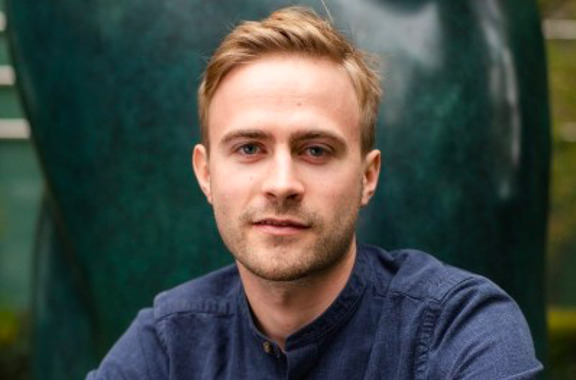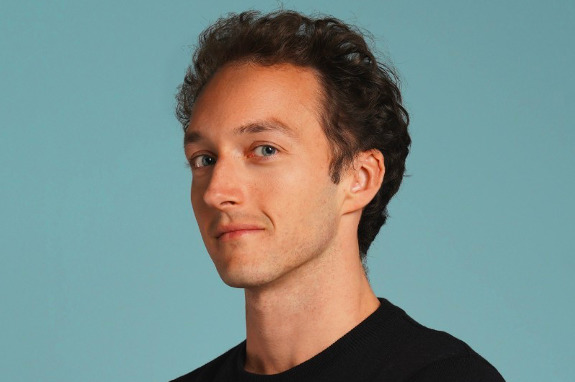Yenwen Feng, co-founder of Perpetual Protocol (PERP) – a decentralised derivatives platform.
On Ethereum 2.0:
“We believe that once Ethereum transitions to PoS [Proof of Stake], the drop in transaction fees on L1 will solidify Ethereum’s position as the go-to place for using DeFi applications. What’s more, the consensus-mechanism change might unlock more types of money as the environmental concern won’t be valid any more.”
On layer 2 scaling protocols:
“In 2021, we started to see some usage of L2. However, the cost of transactions is still higher than sidechains and the ecosystem around them is still primitive. In 2022, we believe the L2 deposit/withdrawal support from CEXs [centralised exchanges] and the existence of bridge protocols will make the UX on L2 much better.
“Additionally, as Arbitrum introduces its ‘Nitro’ upgrade and StarkNet launches, we should be able to see the dramatic drop in fees on L2.”

‘We’ll see the first multichain applications’
Will Harborne, CEO and co-founder of decentralised crypto exchange DeversiFi.
On interoperability and the evolution of multichain crypto:
“In 2022, we’ll see the first multichain applications, which use multiple Layer 1s as part of their core protocol by default. With more new chains entering the space, we will see an ecosystem of multiple blockchains working together.
“To give us an idea of this we can look to Cosmos and Polkadot, which are both multichain ecosystems. Both use similar models that involve a so-called core ‘hub’, with specific blockchains built on the protocol that then connect to the hub.
“The advantage of this is that interoperability between these chains is at a protocol level, and each chain can be optimised for specific use cases but still share the same security.”
On layer 2 protocols:
“We’ve seen the popularity of Layer 1 chains and sidechains skyrocket this year, in a bid to combat Ethereum’s high fees and slow scaling solutions. But 2022 will be the year we’ll see Layer 2 Ethereum reach critical mass adoption, and surpass Layer 1 in both TVL [total value locked] and volume.”

‘DeFi is maturing’
George Harrap, co-founder of Step Finance (STEP) – “the front page of Solana”:
On DeFi’s evolution:
“DeFi is going to go through a learning period where you can’t just rely on emissions, paying coins, and then hoping that people will stick around any more. There’s a lot of mercenary capital, and it’s not good.
“We are seeing the rise of things like OHM and Step Finance’s call options, making emissions a lot more productive and increasing the stickiness of people coming to platforms. It’s no longer just a farm and done. DeFi is maturing, and the retention mechanisms for all of these platforms in keeping these users are going to change.”
‘Ethereum won’t get solved next year… not even close’
On multichain cryptos:
“We already see multichain growing, and I think it will continue to grow. We know there’s a lot of Ethereum Layer 1s… but Ethereum won’t get solved next year… not even close.
“So there is just going to be a proliferation of more Layer 2s and Layer 1s. It’s just going to be expanding the pies, which is a good thing for everyone.”
On DAOs:
“DAOs are going to continue to be a way to orchestrate people towards one goal, and that’s a good thing. There’s just going to be more of them.
“I think people will really realise the human element matters just as much as the technical element in DAOS. You can have the best technical element in the world, for example SushiSwap, but if all of the people in it become corrupt, eventually it doesn’t matter what technical system you have.”

‘DeFi returns will remain an El Dorado’
Marco De Rossi, president at blockchain data provider and automation tool HAL, and author of the Gluing Manifesto.
On the DeFi economy:
“We have two major dynamics investors should care about. In a post-Covid financial context, central banks continue to print money and sovereign states are implementing strong relaunch investment plans. This pushes inflation and private investments.
“In 2022, with bonds returns near to zero, DeFi returns will remain an El Dorado, together with any STEM-related equity market. Institutional giants will continue to invest mainly indirectly, so more and more blending players (crypto asset funds, derivatives indexed to crypto, custodians) will be born to enable that.”
‘Institutional giants will continue to invest mainly indirectly’
On layer 2 scaling:
“The mix of affordable transactions enabled by L2 solutions, together with the launch of dozens of successful B2C [business to consumer] projects that were in their building phase during 2019 and 2020, dramatically increased the number of non-tech-savvy users using blockchains (Axie Infinity is just the tip of the iceberg) and the developers joining the space.
“This directly impacts on crypto assets’ pricing and will accelerate in 2022 – also thanks to Eth 2.0.”
On crypto regulations:
“China, after recent clashes against open solutions like Bitcoin mining, will finally launch its trusted solutions backed by People’s Bank of China. The EU will finally take sides in 2022 as well.”

‘Cross-chain solutions will be one of the hottest 2022 trends’
Jori Armbruster, CEO of agri-fintech blockchain platform EthicHub (ETHIX).
On adoption:
“2022 will be the year of connecting DeFi to the real-world economy. The success of El Salvador adopting Bitcoin will create a cascade effect for other countries to adopt Bitcoin and/or maybe other cryptocurrencies as legal tenders.”
On multichain interoperability:
Alongside this, the multichain reality consolidated in 2021, and will demand more decentralised cross-chain alternatives. This is why cross-chain solutions will be one of the hottest trends in 2022.”
On regulations:
“In the regulatory landscape, I envision regulators changing their position from trying to make crypto fit in their classic point of view in which crypto was not very well regarded, to regulating the space in a crypto-friendly way, as El Salvador has done with Bitcoin. In any case, regulation will always be trying to catch up with the latest trends like the metaverse, DeFi 2.0 or GameFi.”

‘An increasing talent pool will traverse DeFi and TradFi’
Danny Chong, co-founder of Tranchess, a decentralised yield-enhancing asset tracker with varied risk-return solutions.
On the DeFi talent pool:
“2021 has been a huge year for crypto adoption and finally changing its “Wild West” perception, in which we saw a lot of talents leaving their traditional finance (TradFi) jobs to take the leap into DeFi. More financial institutions, like Citigroup, recognise the potentials in crypto and set new crypto arms in which there will be an increasing talent pool traversing DeFi & TradFi in 2022.”
On crypto-native companies going public:
“Crypto finally began being taken more seriously by traditional investors with Coinbase being the first mover to shock investors with its public listing. With OpenSea planning to go public, we will see more crypto-native companies follow the IPO route, giving traditional investors an opportunity to gain exposure to cryptocurrencies.”
‘We will see a new investment paradigm in DeFi’
Shuyao Kong, core contributor at AladdinDAO (ALD), a protocol that harnesses the wisdom of the biggest VC brains in DeFi.
On DeFi investing:
“For the past two years, DeFi has seen tremendous growth in terms of being a new asset class, but also a key infrastructure for the crypto world. However, risks associated with the DeFi space still exist.
“That’s why…
Read More:Crypto 2022: ‘DeFi will hit the mainstream’ – 9 top project leaders predict the near


